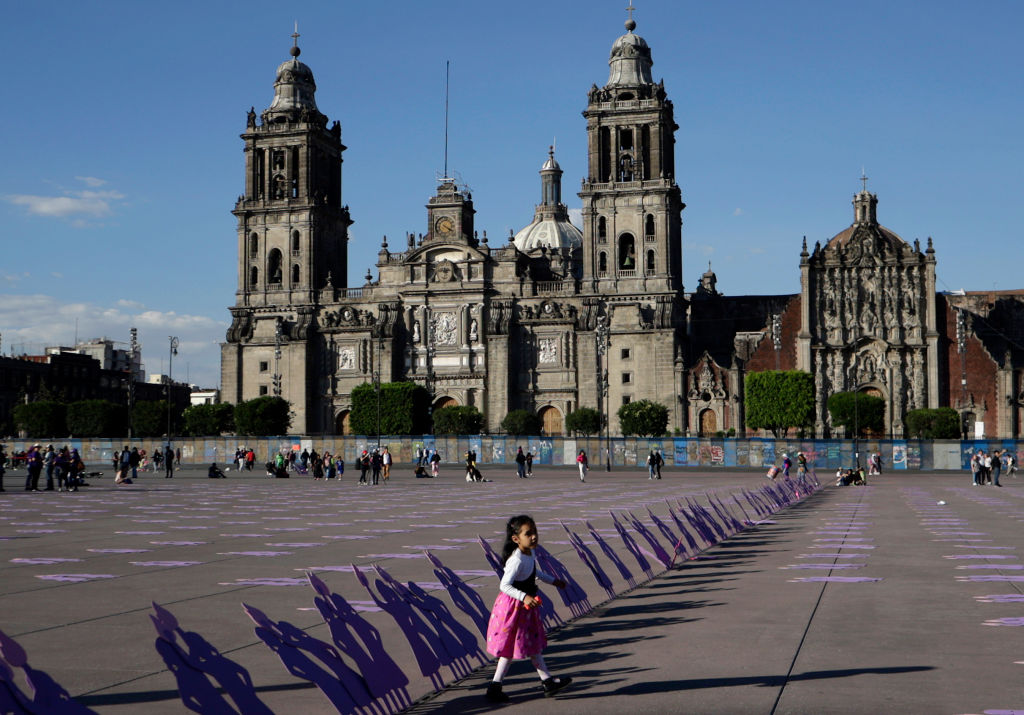Swine Flu in the Spotlight
Swine Flu in the Spotlight
Health organizations and governments are on the move to control and find answers about a swine flu epidemic originating in Mexico.
Updated April 29 - Mexico’s usually bustling capital finds itself under siege from a deadly influenza outbreak. The death toll rose to roughly 150 early this week as Mexico closed schools, canceled sporting and entertainment events, and distributed surgical masks as part of efforts to stop the swine flu’s spread. Meanwhile, cases have sprung up in the United States, Europe, the Middle East, and the Asia-Pacific region. An interactive USA Today map takes a look at where the disease has cropped up and precautions taken around the globe. Even as questions remain unanswered about swine flu, its spread serves as a test for health agencies and governments working to find answers.
Media outlets have responded to the outbreak with Q&A’s, tips, and warnings about the disease. On Wednesday, the World Health Organization (WHO) raised its alert level to “phase 5,” reflecting “human-to-human spread of the virus into at least two countries in one WHO region” and representing a threat level one step away from pandemic. Both the WHO and the Atlanta-based Centers for Disease Control and Prevention (CDC) have issued public health emergencies. But WHO has stated that it is safe to eat cooked pork and, based on WHO’s findings, Director-General Margaret Chan advised against closing borders or restricting air travel.
Several countries have taken steps in response to the flu. Despite evidence that infection remains unrelated to pork consumption, China and Russia banned pork imports from Mexico and U.S. states where cases have been detected. Eight Asian countries are checking air travelers arriving from North America while Hong Kong, Taiwan, and Russia plan to quarantine passengers suspected of having the flu. The BBC published a country-by-country breakdown of steps taken to prevent contagion. Androulla Vasiliou, a health commissioner at the European Union, warned against travel to Mexico or the United States, although The Economist’s Gulliver blog points out that Vassiliou’s comments did not represent an official position.
As pandemic worries spread, attention turns to efforts to control the disease. In an interview with CFR.org, Michael T. Olsterholm of the Center for Infectious Disease Research and Policy praised the CDC and North American countries for working together “extremely well.” Mexico’s former Health Minister Julio Frenk, now dean of the Harvard School of Public Health, commended his country for its response, surveillance system, and ability to collaborate with Canadian experts in identifying the virus’ genetic makeup. An April 26 Department of Homeland Security press conference reviewed U.S.-Mexican efforts to contain swine flu’s spread, including information sharing.
Questions remain about the H1N1 strain, particularly as cases confirmed outside of Mexico appear, thus far, to be milder and have not resulted in fatalities. In Slate, science and medicine writer David Dobbs explores the possible reasons behind why Mexico may be experiencing higher swine flu death rates than are other countries. WHO reports that there is no vaccine for the current virus and outlines which drugs can be used for treatment. ArmsControlWonk asks when is the appropriate moment to sound the pandemic alarm. The blog looks at the delayed response to Severe Acute Respiratory Syndrome in 2003 as well as the case of the 1976 swine flu outbreak, when authorities reacted too quickly and vaccines caused more deaths than the outbreak.
The Mexican government, which declared a state of emergency on April 25, offers updates on its actions in relation to the swine flu. The WHO provides news on the threat of swine flu’s spread. The CDC offers prevention tips as well as updates on U.S. cases. An El Universal online photo gallery takes a look at Mexico City as the capital battles the epidemic. MSNBC covers how the outbreak can be tracked in real time using tools such as Google Maps and Twitter.
AQ's Daily Focus takes a look at swine flu in Central America, where Costa Rica became the first country to confirm a case of the virus.







